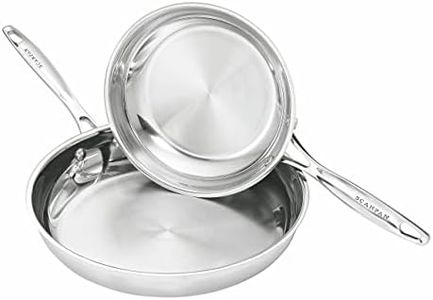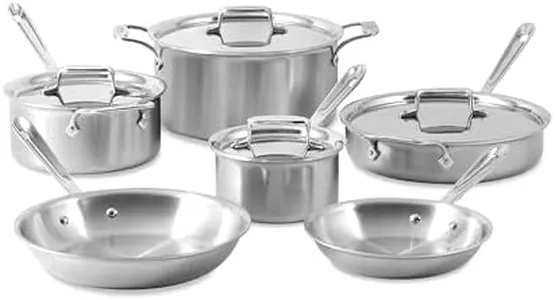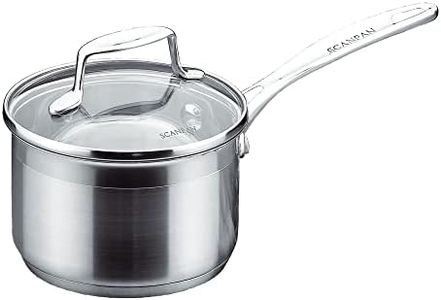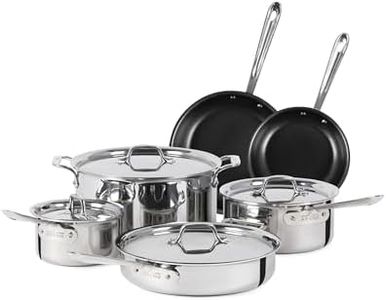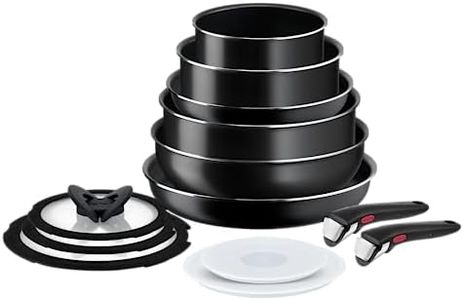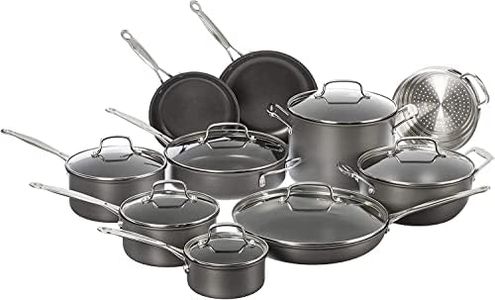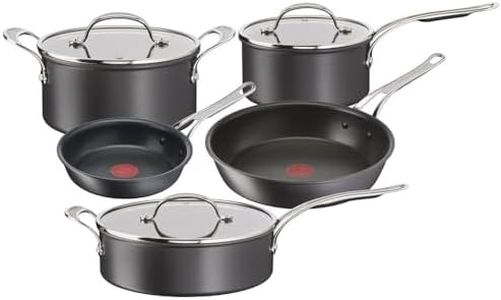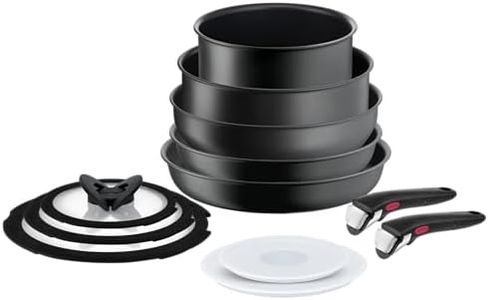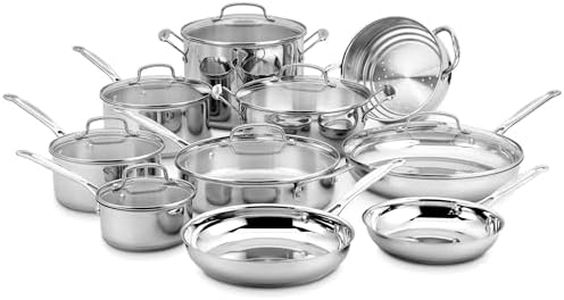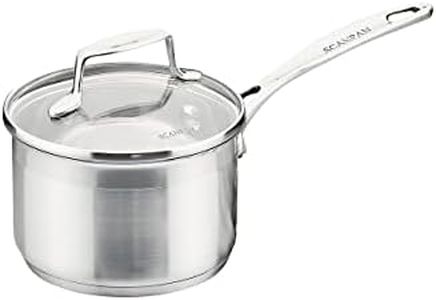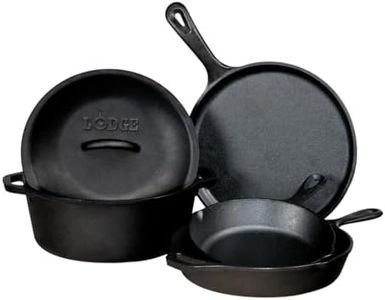We Use CookiesWe use cookies to enhance the security, performance,
functionality and for analytical and promotional activities. By continuing to browse this site you
are agreeing to our privacy policy
10 Best Pots And Pans
From leading brands and best sellers available on the web.Buying Guide for the Best Pots And Pans
Choosing the right pots and pans set can make a big difference in your cooking experience. The right cookware not only makes food preparation more efficient but also can affect how your meals turn out and how easy cleanup is. Before making a choice, think about the types of dishes you like to cook, the size of your household, and what materials you prefer handling. Consider compatibility with your stove type and cleaning habits as well.MaterialThe material of pots and pans affects heat distribution, ease of cleaning, and overall durability. Common materials include stainless steel, nonstick, cast iron, copper, and aluminum. Stainless steel is known for being durable and not reacting with foods, but it may not heat as evenly as other materials unless it has a core or base layer of aluminum or copper. Nonstick pans are great for easy food release and cleaning, but they can wear out over time and aren't suitable for high heat. Cast iron retains heat very well and adds flavor to dishes, but it's heavy and requires special care to prevent rust. Copper heats quickly and evenly but usually comes with a lining to avoid reactions with food and can be pricey. When picking material, think about the types of food you prepare most often and how much maintenance you're willing to do.
Size and QuantityPots and pans come in a range of sizes, typically measured in quarts or inches. Smaller pieces are good for sauces or single servings, while larger ones work well for soups or family meals. Sets can range from just a couple of pans to a full collection with various sizes. If you cook for one or two people, a few essential pieces may be enough. For larger families or people who entertain, more options can help. Think about your cooking habits, storage space, and the foods you typically make to decide which sizes and how many pieces you really need.
Compatibility with CooktopNot all pots and pans work with every type of stove. For example, induction cooktops need magnetic cookware, while gas and electric ranges are more versatile. To check compatibility, see if the cookware is labeled as safe for the kind of stove you have. If you have an induction stove, make sure your pots and pans can attract a magnet on their base, which is essential for the induction process. If you use glass or ceramic stovetops, flat-bottomed pans are ideal for even heating and avoiding scratches. Knowing your cooktop type will guide you toward matching cookware.
Oven-Safe TemperatureSome recipes require moving pots and pans from the stove to the oven. Oven-safe temperature refers to how much heat your cookware can handle in the oven. This is important for dishes that finish cooking or need to be kept warm in there. Handles and lids often determine maximum oven safety, so check both. If you rarely bake or roast with your pans, this might be less important, but if you enjoy dishes like casseroles or frittatas, looking for higher oven-safe limits gives you more flexibility.
Ease of CleaningSome pots and pans are dishwasher safe, while others require hand washing. Nonstick pans are generally easy to clean but need gentle care to avoid damaging the coating. Stainless steel can take scrubbing but may develop discoloration. Cast iron requires seasoning and careful drying to avoid rust. If you prefer quick cleanup, check if the cookware set is labeled dishwasher safe. If you're willing to do some extra maintenance for better performance or longevity, materials like cast iron or copper might be appropriate.
Handle Comfort and ConstructionHandles can affect how easy and safe a pot or pan is to use, especially when full or hot. Some handles stay cool on the stovetop, while others heat up quickly. Riveted handles tend to be sturdier but can trap food particles, while welded or molded handles are easier to clean. Comfort in the hand matters, especially if you cook often or recipes require lifting and pouring from heavy pots. Try to imagine or test how the handle feels, and check for secure attachments.
Lid Type and FitLids help trap moisture and heat when cooking, so they should fit snugly. Some are made from glass, allowing you to see the food without removing the lid, while metal lids are more durable and often lighter. Steam vents in lids can help prevent boiling over. Depending on your cooking style, you might prefer glass lids for monitoring or metal lids for stove-to-oven flexibility. Consider which features will make your cooking process easier and your results better.
